It turns into a debate whenever I mention car seat protectors to my friends with kids!
Are they safe? Are they not safe? What's the deal?
If you recently had your leather seats installed, you must know that car seat marks are inevitable.
Considering you paid a mini fortune for those car seats, the only logical thing to do is get a car seat protector. However, it has been quite controversial over the years.
Why? You are about to find out.
I will explain some of the pros and cons of using a car seat protector for car seat installations.
Then, we'll clear the air once and for all and see whether these things are safe to use with tiny passengers in the back seat.
More...
First Things First: What Are Car Seat Protectors?
Car seat protectors have become a favorite of many, especially those with messy children and pets!
They protect your car's seats from daily wear and tear as well as prolong the life of your expensive leather seats.
However, using them with baby car seats can become dangerous sometimes.
Some baby car seat manufacturers allow for protectors, which makes parents even more confused!
But we will get on that later.
1. Inspect Your Car Seat's Manual!
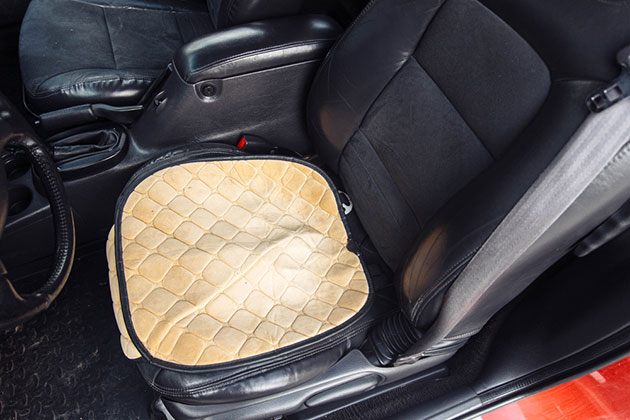
You will find that almost all baby car seat manuals include clear information on whether something should or should not be used underneath the car seat.
So don't go thinking you can outsmart the manufacturer by DIY - in your seat protector or purchase one even though the manual clearly says it's not allowed!
Some car seats are not compatible with vehicle seat protectors in case of a collision; they can lead to compression!
However, in the car seat manual, some may even recommend a few seat protectors that are compatible with the baby car seat.
Others may even suggest using a thin towel underneath or a thin receiving blanket.
2. Have They Been Crash Tested?
Car seat protectors are considered an aftermarket product. What does that mean?
If it did not come with the car seat, then that accessory is sold separately, therefore belongs in the third-party category.
These accessories are usually seat belt extenders, adjusters, headrest pillows and infant supports, harness shoulders, and among them are the car seat protectors.
You will find that most of these accessories claim to be crash-tested, while some of them are even FMVSS approved. However, here is where the problem lies.
Some parents would take one look at them, check all the approvals and click "BUY" without even stopping to think about one crucial criterion.
However, if you closely examine the Federal Standards, you will find that they do not cover approval for these types of accessories.
The Federal Motor Vehicle Safety Standard must first approve all car seats on the market.
However, the accessories sold separately are often not tested with the car seat.
Some of the manufacturers test their car seats with specific seat protectors to determine their safe use.
If you want to use a protective mat underneath the seat, I suggest choosing from the car seat manufacturers.
To answer your question, have they been crash tested?
Some of them are, but we can never be 100% sure in what circumstances they undergo the crash test.
3. Why Are They Considered Dangerous?
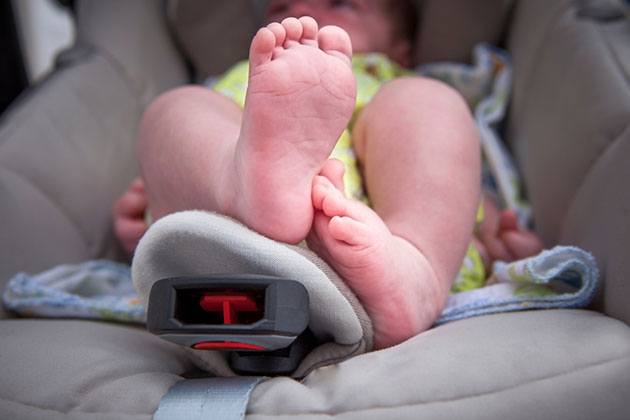
The number one thing that makes car seat protectors interfere with child safety is creating a space between the two components.
If the car seat moves, so will the car seat protector mat, which further loosens the car seat installation.
The thicker the padding, the more compression they will make underneath the child's car seat.
On the other hand, some car seat protectors have grippy sides that stick to the child's car seat.
But, this may not always work in practice, especially if you buy a protector from the aftermarket company.
Buying a car seat protector from an aftermarket company is what makes it dangerous.
These have not been tested with the child seat of your choice, so it's unsure whether it will do the job at protecting your vehicle's seats or endanger baby safety.
Therefore, using a seat protector from the car seat manufacturer is less dangerous than using one off the market.
How to Test the Car Seat Protector?
1. Check if It's Been Approved
Before you do anything, make sure that the manufacturer recommends the car seat protector you have picked out, has been crash tested and passes all the safety criteria.
You can do this by checking the car seat manual; I recommend never throwing it away and always keeping it nearby.
You will also need the car seat manual for following the instructions of the installations. Then, you want to check for movement!
2. Movement Check
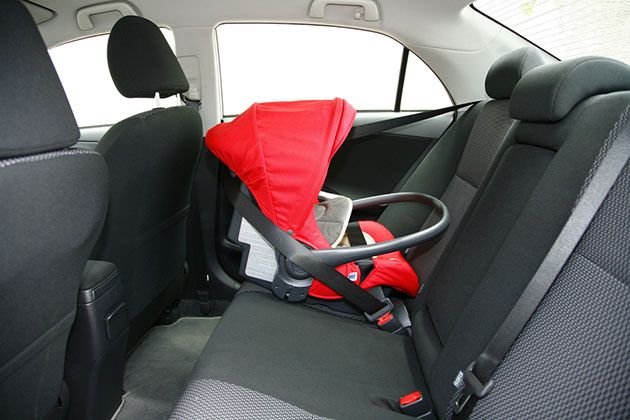
When the car seat is installed, it should not move more than an inch at the belt path when you move it side to side and front and back.
Any more movement than an inch is troublesome, and the car seat is not correctly installed with the seat protector.
Then, you want to take out the car seat protector underneath the car seat and install the car seat without one.
Could you test it out for wiggle room now?
If it does end up moving more than an inch, then the seat protector is not compatible with the baby car seat, and it was not properly installed, making it unsafe for use.
3. Material & Thickness of the Fabric
These two play a big role when you want to test whether the seat protectors are safe.
For instance, we found that thick padding can be a huge risk!
Not only does it create several inches of space between the baby seat and the vehicle seat, but it's also easier to bundle up if the car seat moves.
In addition, by bundling underneath the child's car seat, the padding can create compression and even loosen the car seat installation.
So, thinner seat protectors are a better choice.
Well, they sure are a better alternative than thick ones, especially those with grippy material.
What Kind of Car Seat Protector Models Are Available?
When there is a secure installation of the baby car seat, it will not leave significant marks on the vehicle's upholstery.
However, if you want to make sure your vehicle's interior is protected at its finest, here are a few car seat protectors available.
1. Kick Mats
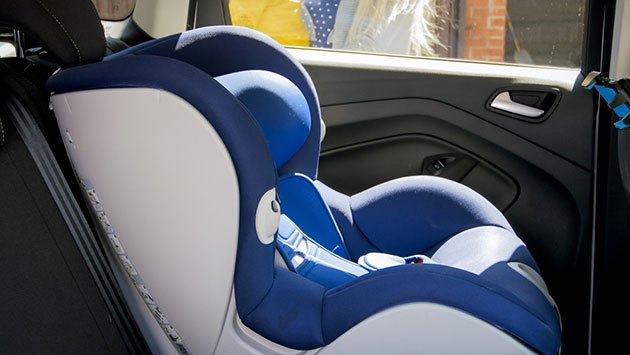
If you have toddlers, preschoolers, or teenagers who ride forward-facing, then these types of protectors are the best.
They are installed on the backside of the vehicle's seats, and they protect your car seat's from dirty shoes.
If you live in rainy areas, consider these a must! They do not interfere with the car seat installation as installed in the back.
Plus, they are perfect for messy toddlers who always manage to get something on the seat!
Also, some of them even have storage pockets on the back to put all the necessities you would need.
Not only that, but it's an excellent place to hide a few snacks or toys your kid may need for a long road trip.
2. Bucket Car Seat Protector
The bucket seat protectors are popular for parents with one child as they are only suitable for a single seat.
They protect vehicle seats from daily wear and tear and spilled beverages; however, they are only suitable for one seat at a time and cannot be installed on the middle seat.
The great thing about them is that they are perfect for the passenger seats in the front.
3. Bench Car Seat Protector
You will probably see bench car seat protectors in most cars. They are a one-piece design covering the entire length and height of vehicle seats.
If you have messy kids, these will do a great job at protecting the upholstery of the vehicle seats.
They are also a favorite of those with pets! Some even have tear-resistant properties that protect the seats from claw marks.
Most car seat protectors of this design do not have an opening for the vehicle seat belt, which presents a safety risk for the passengers in the back.
This is probably one of the unsafest options you can get, so be careful! If you can, always purchase the one that allows the opening for the belt path.
What Can You Use Instead Car Seat Protectors?
If you are still eager to protect your car interior, but you just realized how much of a safety hazard seat protectors could be, I have a better idea!
Why don't you test one of these alternatives?
1. Towel
Thin towels are a great alternative if you don't want car seat protectors.
They often do not interfere with the good installation of car seats as they are relatively thin.
However, some new parents may even fold the towel in half and create bigger support for the car seat.
But, I have to warn you.
This may not be a clever idea as it can add to the bulkiness and not allow for proper installation.
Plus, they can mask a loose install of the car seat and ensure the safety of your little one.
Again, you want to check if the thin towel is properly installed, just as you would do with car seat protectors.
Then, move it around the belt path and see if it passes the one-inch test.
2. Receiving Blanket
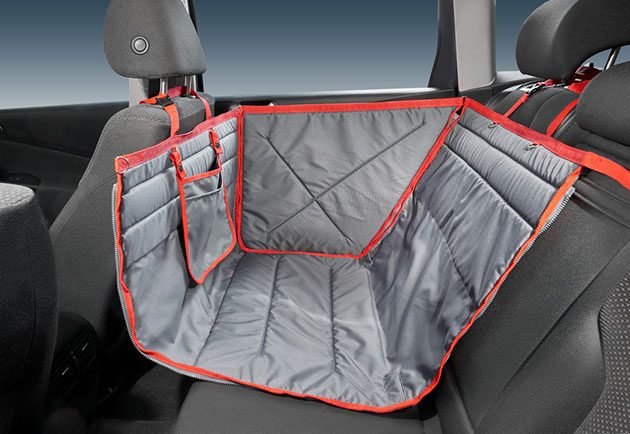
Why is it called this way?
When a baby is born, they usually wrap it in the blanket when handing it to the new parents-hence the receiving blanket!
They are super thin and made from cotton, so there is a minimal chance these blankets interfere with the safety of your little one.
As any Child Passenger Safety Technician, they tell you that receiving blankets is the safest alternative for seat protectors!
Because they are so thin, you can tell if the car seat has been installed properly or not.
FAQs
Are car seat protectors safe?
If you use a car seat protector recommended and tested by the car seat manufacturer, they are considered safe.
Aftermarket seat protector models are not regarded as safe as they have not been crash tested with the car seat of your choice.
In case of car accidents, the thick fabric buckles up and creates compression, thus loosening the installation of the car seat.
Are car seat protectors necessary?
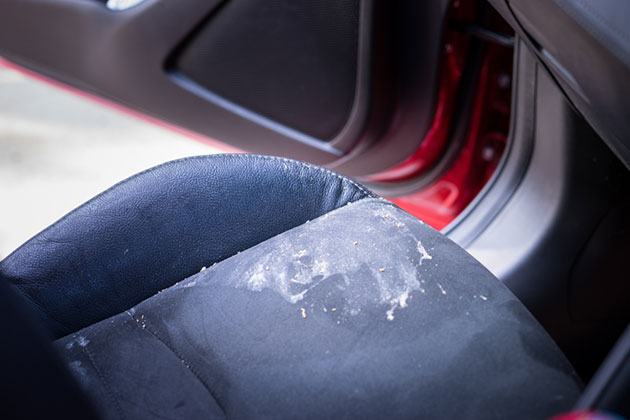
No, car seat protectors are not necessary.
However, car seat protectors are a good option if you want to protect your new vehicle seat from daily wear and tear of a child's shoes or pet claw marks.
However, you should know that many of the protectors do not vouch for a complete dent-free solution; they only offer protection from spills or scratches.
What can I put on my car seats to protect them?
If you do have to install a baby car seat and want to protect your car's upholstery along the way, there are a few solutions.
You can use car seat protectors recommended by the car seat manufacturer or use a thin towel or a receiving blanket as a safer alternative.
A tear-resistant seat protector will do the trick if you are not a parent and are just looking for an effective protective layer.
Can you use a seat protector with Britax?
If the Britax manufacturer allows the seat protector and has tested their car seat with one, you can use the specific brand they recommend.
However, if they prohibit their use, it can interfere with the installation of the car seat, so protectors are not safe.
Bottom Line
The car seat protector may be one of the most popular accessories you can get for your vehicle, but even they do not offer 100% protection against the baby car seat dents.
The risk they bring along is far more important than the benefits, so think twice before purchasing them.
If you are still keen on the idea of one, I always recommend you contact the car seat manufacturer and see if there are any recommended options you can try.
